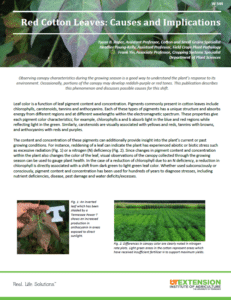Category Archives: Farm Management
UT Commodity Market Update
Corn: Corn futures have traded $0.13 higher since the market’s open on Monday morning. Corn futures have closed higher for six days straight. The USDA report from last week left room for the market to become more bearish with a projected national yield of 175.1 bushels per acre. However, after sifting through the report, it appeared that the trade was already trading the expectations of a high national yield. Some analysts are beginning to question the methods that USDA used to come up with their yield figures. Many are pointing to the fact that the estimate is based on a record ear size that excludes a kernel count.
UT Commodity Market Update 8/4/2016
Corn: So far this week, September corn futures have traded lower by $0.11. Corn futures have traded lower for the past 15 trading days. Weather forecasts for the Midwest are indicating higher temperatures with adequate rain. The rainfall could offset any potential damage caused by the increase in temperatures. Private estimates of the national corn yield are ranging between 169 to 175 bushels per acre. Continue reading
Red leaves in cotton: Causes and implications
Tyson Raper, Heather Kelly and Frank Yin

 Observing canopy characteristics during the growing season is a good way to understand the plant’s response to its environment. Occasionally, portions of the canopy may develop reddish-purple or red tones. The synthesis of anthocyanin, the pigment which typically causes the reddening, is commonly increased after leaves are exposed to light following multiple abiotic and biotic stresses. Continue reading
Observing canopy characteristics during the growing season is a good way to understand the plant’s response to its environment. Occasionally, portions of the canopy may develop reddish-purple or red tones. The synthesis of anthocyanin, the pigment which typically causes the reddening, is commonly increased after leaves are exposed to light following multiple abiotic and biotic stresses. Continue reading
UT Crop Market Update 7/28/2016
Corn: So far this week, September corn futures have traded lower by $0.04. Corn futures have essentially traded sideways for the past seven trading days. Without a weather scare, it seems that corn prices will continue to be abysmal. We have moved past the point of pollination and it would appear that the corn crop has not been negatively impacted by the weather. At least, that is what is being reflected in current futures prices. The USDA continues to rate 76% of the crop as being good-to-excellent with 79% of the crop silking. In the extended forecast, normal rainfall is anticipated for most of the United States over the next 6 to 10 days. Local new crop basis continues to soften as we approach harvest.
Soybeans: November soybean futures have traded sideways since the market opened on Monday morning. Soybeans face a similar fate to that of corn. Weather is expected to be favorable in many key soybean growing states as we enter into August. The forecast of ample rainfall during pod fill has the trade guessing that the soybean crop will be relatively large. That is keeping a lid on higher soybean prices. The USDA continues to rate 71% of the crop as being good-to-excellent with 35% of the crop already setting pods, which is ahead of the 5 year average. Local new crop basis continues to weaken for soybeans as we get closer to harvest.
Wheat: July 2017 wheat futures has declined by $0.14 so far this week. The decline in wheat futures is likely a result of a decline in nearby wheat futures and a partial spillover effect from the other grains. Producers should be mindful that wheat planting is less than 3 months away and begin to monitor July 2017 wheat futures.
Cotton: December cotton futures closed at 72.97. Cotton exports continue to be strong due to Vietnam and Chinese purchases. Yesterday’s market close price was below 75.00, which may set a technical trading pattern for lower prices. Cotton equities, or loan options, continue to be approximately $0.14 to $0.15 for West Tennessee.
Take Home Message: Grain futures are struggling to hold their head above water due to favorable weather conditions across most of the Midwest. This year is setting itself up to be a year where grain may predominantly go in the bin instead of going to town. Many farmers are unwilling to price corn at these levels as a profit cannot be easily locked in. However, the same cannot be said of soybeans as a profit can still be locked in for many producers at the $10.00 mark. Producers should keep in mind that as harvest approaches we should expect to see futures trend lower. This creates two scenarios for many producers. Either look at layering sales now before harvest pressure begins to set in or store grain. Is it possible that we could see higher prices come harvest if the crop is smaller than we originally thought? Theoretically, yes. However, as long as we see good weather across the Midwest, the chances of this happening is relatively slim. Of course, there is a third scenario where producers can sale grain across the scales at harvest lows. Producers should continue to monitor their costs of production and evaluate prices. Producers are likely more willing to be aggressive sellers since many have a good feeling of what their corn yields will be as we have made it through pollination. However, price levels are preventing those sales from being made. Another option if you do not have storage is deferred pricing. Talk to your local elevators to see if deferred pricing is suitable for you. It does come at a cost per bushel, but it allows you to deliver grain and price the grain at a future date. It allows you to market your grain as if you have storage.
West Tennessee Grain Bids: Grain Newsletter 7-28-2016
Pesticide Points and CEUs at Milan No-Till Field Day
 Commercial Pesticide Applicator Recertification Points can be obtained in C1, C10 and C12. Seven points will be available in each category. A total of 13 Certified Crop Advisor Continuing Education Units will also be available. See the complete breakdown here.
Commercial Pesticide Applicator Recertification Points can be obtained in C1, C10 and C12. Seven points will be available in each category. A total of 13 Certified Crop Advisor Continuing Education Units will also be available. See the complete breakdown here.
UT Crop Market Update 7/21/2016
Corn: September corn futures have declined by $0.18 since the market’s open on Monday morning. During today’s trade, a new contract low was established for the September futures contract. Weather continues to be the dominating factor that is pushing corn prices lower. Extended forecasts are showing milder temperatures for the Midwest for the next 30 days with some rain forecasted for most of the Midwest in August. Also, Iowa and Illinois reportedly have adequate soil moisture, which further reduces the chance of a smaller corn crop. Continue reading
UT Crop Market Update 7/14/2016
Corn: September corn futures have traded sideways since the market’s open on Monday morning. Earlier in the week, corn futures were higher due to the USDA’s lower than expected carry out in the latest World Agricultural Supply and Demand Estimate (or WASDE) report. The WASDE report was released and it indicated that corn ending stocks were 2.08 billion bushels. This was lower than the average trade estimate of 2.205 billion bushels. Normally, when you have a report that indicates lower supplies, you would expect to see higher prices in the corn market. Continue reading


